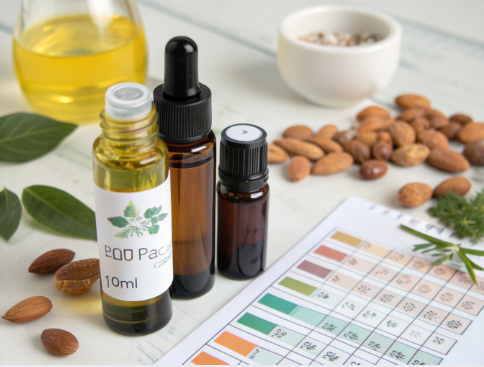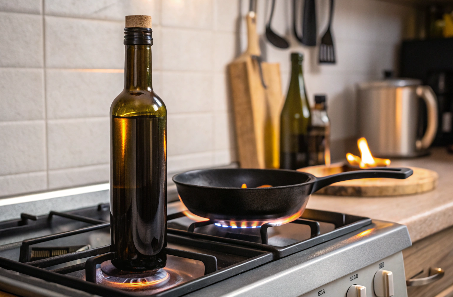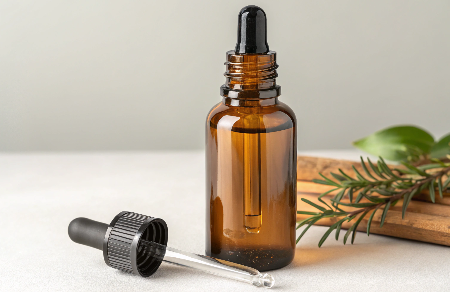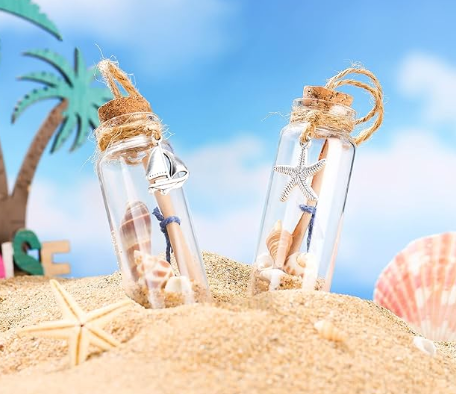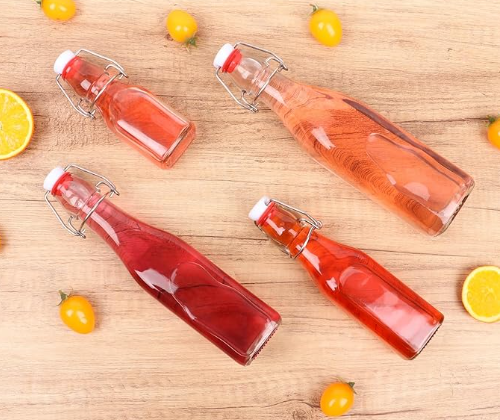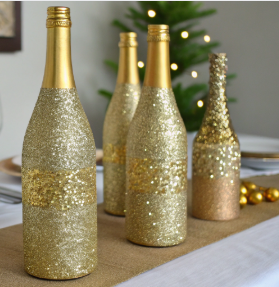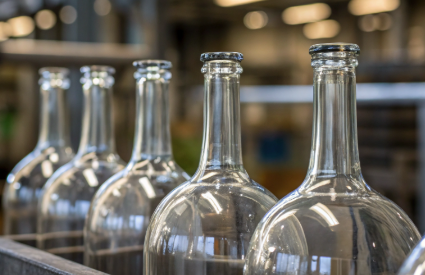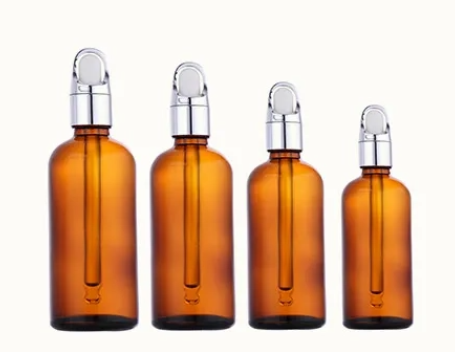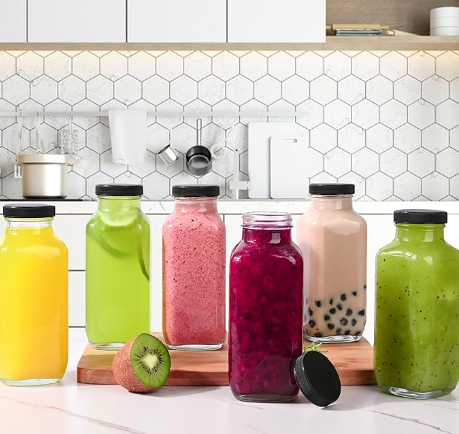Storing oils near the stove might be convenient—but it’s risky without the right container. Heat, light, and air can quickly turn good oil bad if the packaging can’t handle it.
The best bottles for keeping oils near the stove are dark-colored glass or high-quality stainless steel containers with airtight closures to protect the oil from heat, light, and oxidation.
Let’s break down the best options for both cooking oils and essential oils when they need to stay close to the heat—but not lose their integrity, aroma, or shelf life.
What is the best container for storing cooking oil?
Think dark, sealed, and easy to pour.
The best container for cooking oil is a dark glass bottle or stainless steel cruet with a tight-sealing pour spout or cap to limit exposure to light and air.
Why Packaging Matters for Cooking Oil
Cooking oils like olive, avocado, or grapeseed are sensitive to their environment. Prolonged exposure to oxygen, sunlight, or heat can:
-
Break down healthy fats
-
Accelerate rancidity
-
Affect taste and nutrition
-
Cause off-smells that ruin food quality
Ideal Cooking Oil Storage Near Heat:
| Container Type | Material | Pros | Cons |
|---|---|---|---|
| Amber Glass Bottle | Glass | Blocks UV light, doesn’t leach | Fragile, needs careful handling |
| Stainless Steel Oil Can | Metal | Heat-resistant, blocks all light | More expensive, can dent |
| Ceramic Cruet | Ceramic | Stylish, good for serving | Heavy, can chip |
| Clear Plastic Bottle | Plastic | Lightweight, inexpensive | Not UV safe, reacts to heat |
Many commercial oils come in clear plastic bottles for cost reasons—but that doesn’t mean they should stay in them long-term, especially not near the stove.
At PauPack, we offer amber glass bottles with precise pour control, leak-resistant caps, and food-grade materials that are ideal for culinary brands and premium kitchen oil packaging. Whether you're filling avocado oil or an herbal infusion, we ensure the bottle preserves quality and enhances presentation.
Which bottle is best for essential oils?
The same rules apply—plus a few more.
Amber glass dropper bottles are best for essential oils, especially if stored in warm areas like near a stove. They block UV rays, resist heat damage, and don’t react with oil compounds.
Essential Oil Sensitivities
Essential oils degrade faster than cooking oils. Their aromatic compounds are volatile and sensitive to temperature, light, and air. That means improper packaging leads to:
-
Rapid evaporation
-
Reduced therapeutic effects
-
Changes in color and scent
-
Leaky bottles due to pressure changes
Key Features to Look For:
-
Material: Borosilicate or thick soda-lime glass
-
Color: Amber (best), cobalt blue (good), clear (avoid)
-
Closure: Dropper cap, reducer insert, tamper-evident seal
-
Volume: 5ml–30ml for practical use and freshness
If you must store essential oils near your stove—for use in diffusers or quick kitchen blends—keep them in a shaded area and rotate them frequently to maintain potency.
PauPack’s dropper bottles and roll-ons are made from pharmaceutical-grade amber glass and include reducer inserts and cap liners designed to hold up against eucalyptus, peppermint, citrus, and more.
Is it safe to store cooking oil in plastic bottles?
Only in certain conditions—and not near heat.
Storing cooking oil in plastic bottles is common, but not ideal near the stove. Heat and UV exposure can cause plastic to leach chemicals and oxidize the oil.
Plastic Oil Storage Rules
| Plastic Type | Safe? | Notes |
|---|---|---|
| PET (#1) | Short-term | May warp or leach under heat |
| HDPE (#2) | Better | Heat-resistant, used in food-grade packaging |
| PP (#5) | Good for caps | Durable and inert, but still not ideal for hot areas |
| PVC / LDPE | ❌ Unsafe | Prone to chemical leaching and heat damage |
Most retail plastic bottles are designed for shelf storage—not for sitting next to a hot stovetop. Even HDPE, though better than PET, will eventually weaken under repeated heat exposure. And once oxidized, oil becomes nutritionally harmful.
At PauPack, we prioritize glass and stainless steel for any packaging meant for hot kitchens or sunlit countertops. Our containers go through heat-resistance tests and sealing integrity checks, especially for clients in foodservice or health-food sectors.
Which container is best for oil?
Choose based on oil type, usage, and placement.
For general oil storage (cooking or aromatic), the best container is a dark glass or stainless steel bottle with a tight-sealing cap to prevent oxidation, preserve flavor or scent, and resist heat.
Best Options by Use:
| Use Case | Container Type | Why It Works |
|---|---|---|
| Cooking (near stove) | Amber glass or stainless | Blocks light, resists heat |
| Salad dressing or light oils | Glass cruet with spout | Easy to pour, elegant for serving |
| Essential oils | Amber dropper bottle | UV + air protection, chemical resistance |
| Infused oils (herbal, chili) | Glass jar with metal lid | Easy to sanitize, reusable, low reactivity |
To reduce the risk of spills or degradation, always choose containers with:
-
Airtight closures
-
Thick, heat-tolerant walls
-
Ergonomic designs (for safe pouring)
And don’t overlook labeling—exposure to oil or steam can cause ink to smear or labels to fall off. PauPack offers oil-resistant label printing and embossing services to help brands maintain shelf appeal, even in the kitchen.
Conclusion
If you’re keeping oils near the stove, the right bottle matters. Go with amber glass or stainless steel, seal it tight, and store smart—so your oils stay fresh, safe, and effective. At PauPack, we help beauty and culinary brands source packaging that protects both the product and the end-user experience, with material choices and customizations that match your market and mission.




